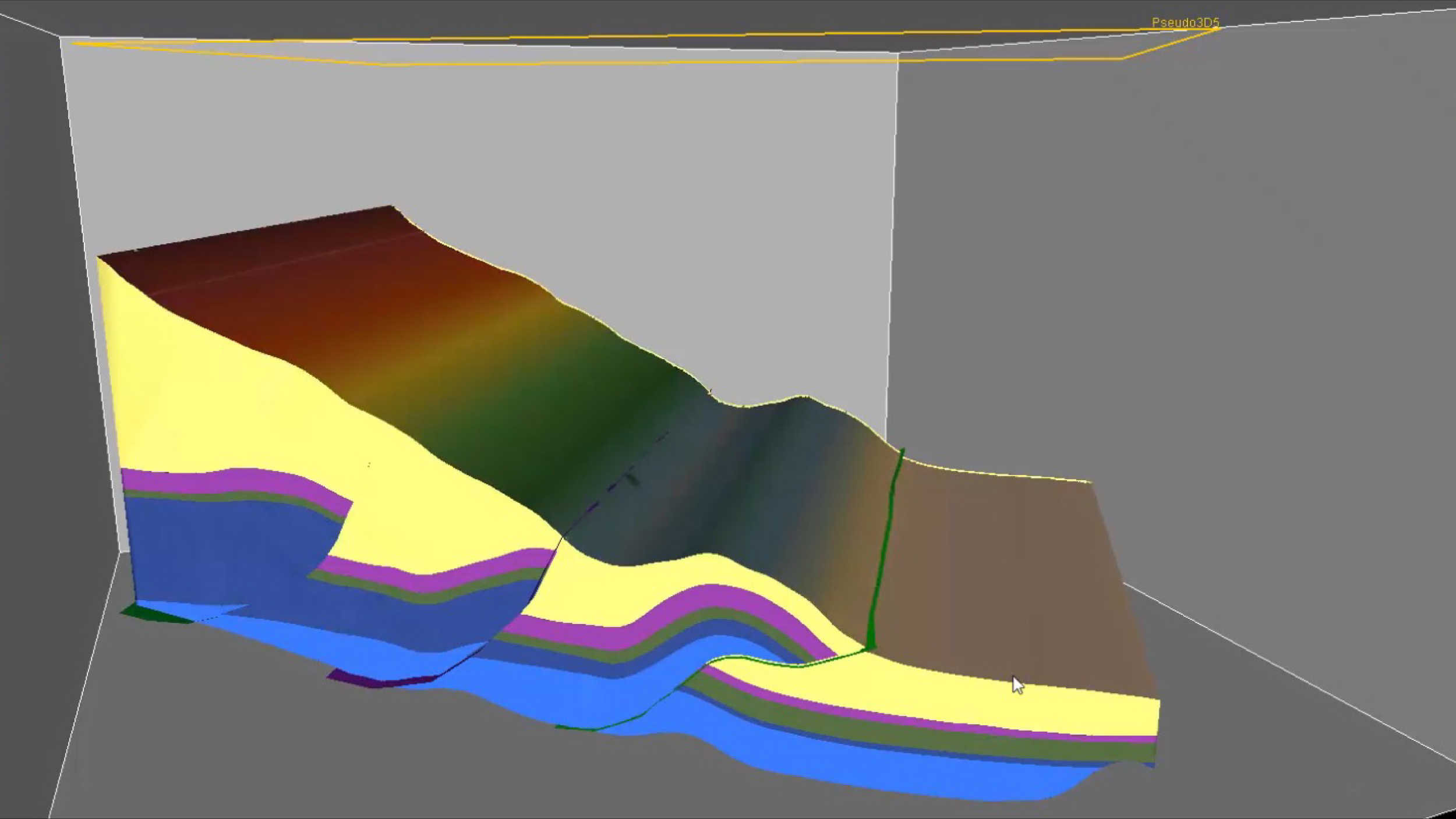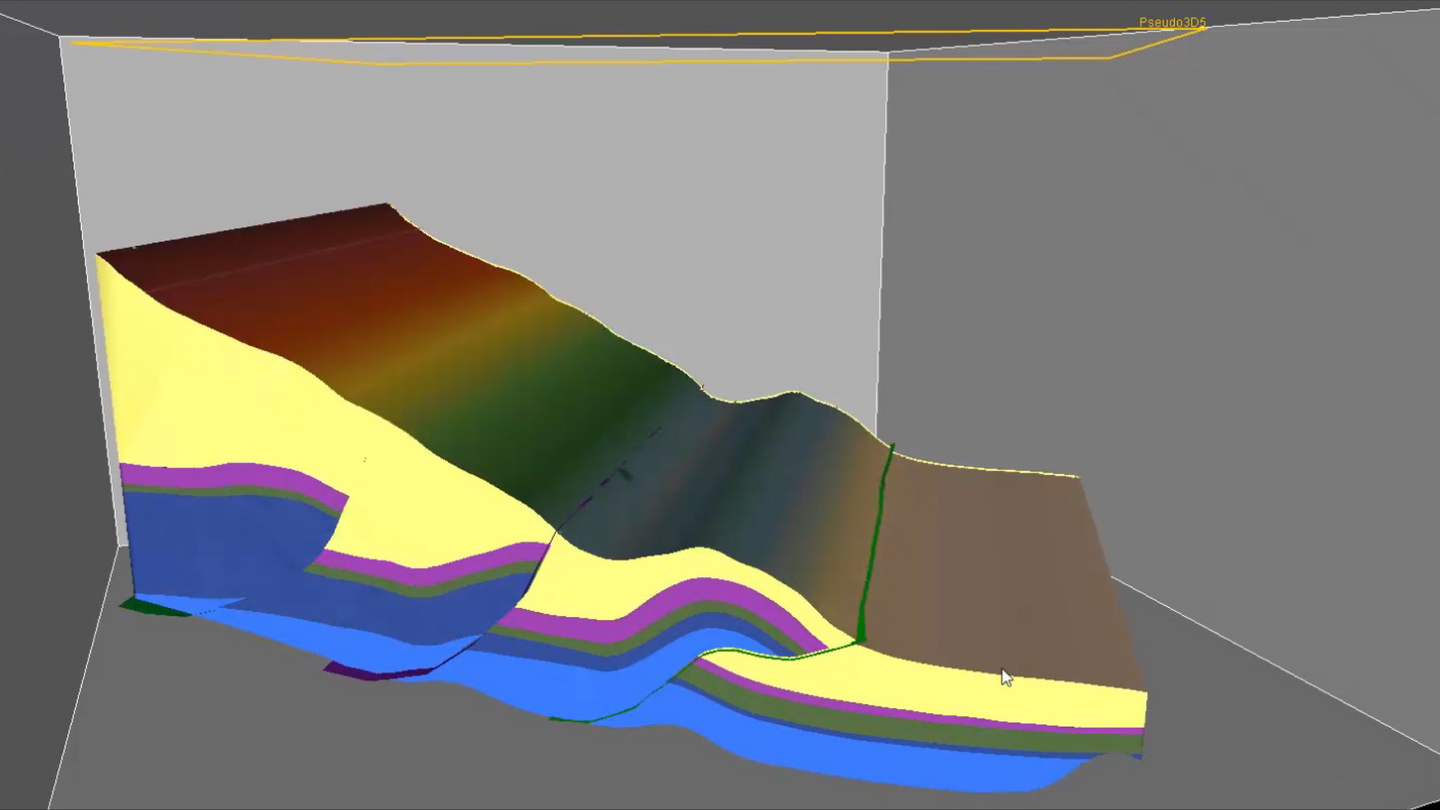 Search
Search
 Search
Search

Traditional structural modeling of complex geologic settings with multi-z surface data forces you to choose between honoring your data and resolving your topology. This makes it challenging to build a structural model that accurately represents your subsurface understanding.
Subsurface models enable hypotheses to be tested and therefore serve as an important input to decision-making in oil and gas exploration and development. This is true in areas of minimal data constraint or where interpretations are ambiguous. And this is especially important in complex structural settings, as these are typically areas with poor quality seismic data, minimal exploration well data, and uncertainties around the structural evolution of the study area.
The Dynamic Frameworks to Fill® software, part of the latest DecisionSpace® 365 Geosciences Suite release, leverages multi-z horizon and data interpretation to construct complex structural frameworks that can retain the characteristics of traditional Dynamic Frameworks to Fill structural models, with the ability to change modeling parameters iteratively.
This streamlines the subsurface workflows and avoids static models. The software is available on the cloud, and as part of our on-premise equivalent, DecisionSpace 10ep.
In this latest release, Dynamic Frameworks to Fill software introduces two new concepts to subsurface modeling. First, the volume of space occupied by the framework is subdivided by faults to allow different regions to be computed independently and in parallel. Second, all surfaces are computed simultaneously, and parameters are applied to the entire framework. This allows easy construction of multitude of stratigraphic relationships, and for the first time, the inclusion of reverse faults and multi-z surface data into frameworks. Let's take a closer a look.
Complex geology in Dynamic Frameworks to Fill uses the same data objects as traditional structural models, with the addition of multi-z horizons interpreted through the Seismic Interpretation software. It leverages multi-z data interpretations, along with fault networks to generate a subsurface model representative of a compressional regime. How the input data is honored can be managed in multiple ways and this allows for the consideration of noise and uncertainty.
This helps users to build complex 3D subsurface models efficiently with the application of geological controls where reverse faults are present. Ultimately, this enables geoscientists to minimize uncertainty in key aspects of the petroleum system, such as reservoir architecture, seal integrity, migration pathways, and accomplish prospect generation and drilling sweet-spot identification in these complex geological settings with greater efficiency and a higher level of confidence.
Our new algorithm calculates all framework surfaces simultaneously, and allows entire packages of surfaces to be adjusted, for any data input and for any surface within the package. Dynamic Frameworks to Fill’s new algorithm also comes with conformance parameters which are designed to reflect common stratigraphic principles and relationships (e.g., the ability to maintain constant thickness trends). The user can assign weightings to these algorithm parameters and therefore control and vary geological parameters to easily test hypotheses. This results in generation of valid surface geometries that best satisfy the inputs, particularly in cases of sparse data.
Most importantly, complex structural frameworks retain the characteristics of other Dynamic Frameworks to Fill structural models. This offers the freedom to change modeling parameters iteratively, saving time in subsurface workflows and avoiding static models. The workflow also integrates geological parameters and enables geoscientists to collaborate on a shared structural model. These factors are especially significant when working in complex structural settings, where data challenges and structural complexity are likely to increase model uncertainty. The ability to easily test hypotheses and apply (and vary) geological parameters is a significant advantage in these conditions. Apart from this, collaboration and knowledge sharing between teams is a vital ingredient for success when building these models – for instance, a subsurface team may want to leverage the expertise of their structural geologists.
The main objective when constructing a 3D structural framework is to obtain a watertight model, honoring horizon-fault contacts where multi-z surface geometries are accurately computed. Combined with multi-z geophysical horizons, this workflow gets streamlined and leads to better data management.
The Dynamic Frameworks to Fill software divides the volume of space to be modeled by the fault network, so the portions of surfaces in each fault block can be computed independently. The discrete dissection of the complex model allows structures, such as thrust fault stacking, to be modeled quickly and with confidence. The resulting complex structural model offers efficiencies, opportunities for collaboration where multiple users can work on the same model to facilitate better decision-making in fold and thrust belts.
To summarize, Dynamic Frameworks to Fill can make the most of your complex geology data and interpretations, build complex 3D subsurface models in fold and thrust belts, and minimize uncertainty in key aspects such as reservoir architecture, seal integrity and migration pathways. Moreover, since Dynamic Frameworks to Fill is a collaborative environment, users can work together on complex geological models which leads to better decision-making.
Expert: Nick Matthies | Solution Owner, Mapping And Modeling
Rodney Barraclough | Senior Quality Assurance Tester
